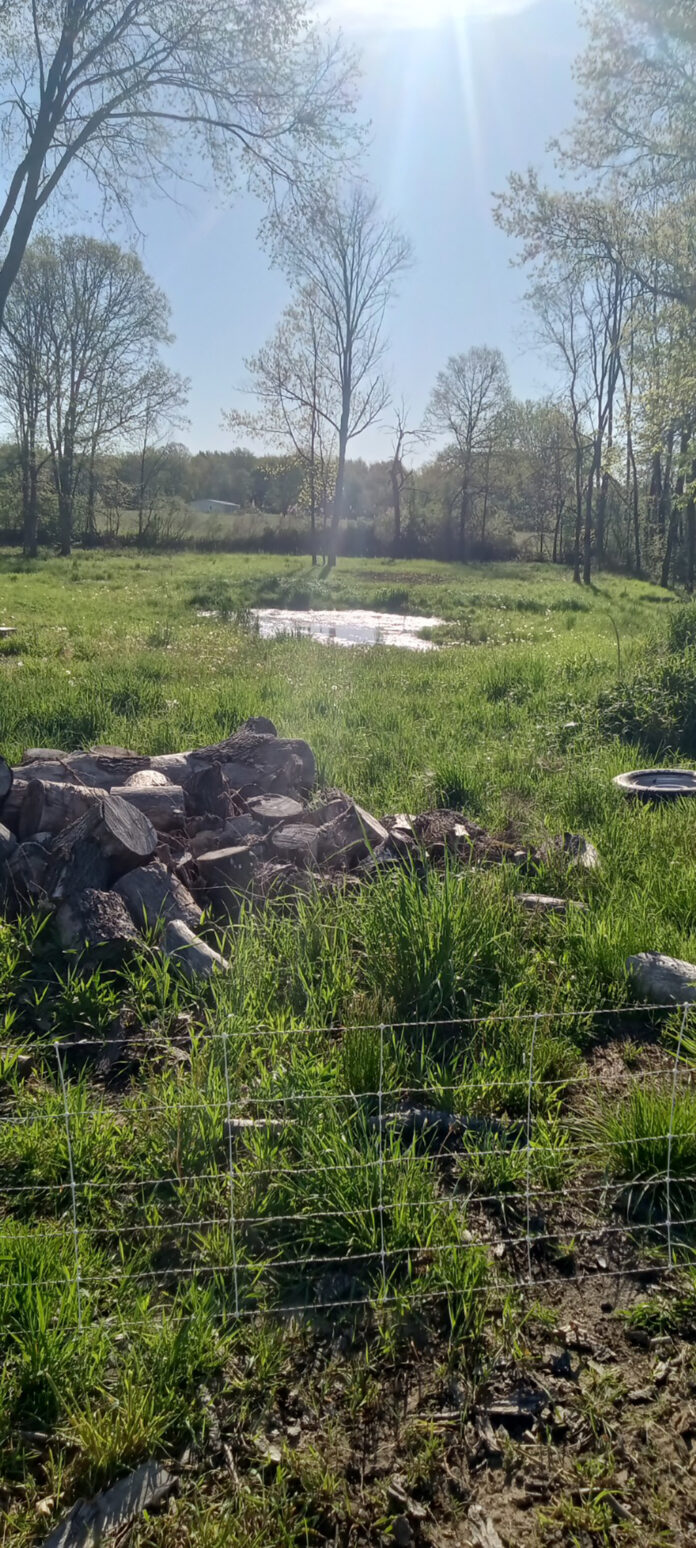Access roads and ponds are two of the biggest priorities for a farm or homestead. In “Polyface Micro,” Joel Salatin covers the importance of both, but I didn’t need to read it to understand.
I was only able to reach half of my property, half of the year. That’s when it was dry enough to pass. Furthermore, 2023 provided an early drought that we barely recovered from.
Without the early rains, the grass didn’t grow. After the winter snow melted, the runoff accumulated in my woods. The property slopes into the woods, and a large area was submerged under water. I dug some pilot holes to look at the soil, and then I called some professionals.
Several people came out, but no one really understood what I wanted to do. Simply, I wanted to dig a hole in the ground and let it fill up with water, so that I could irrigate my pasture during droughts.
One person told me that he wouldn’t even dig where I wanted to; instead, he offered to dig it on the northern side of my property, where the water wasn’t currently sitting.
In one of his books, Gene Logsdon said his dad complained when engineers from the government offered to help him with his pond construction. He grumbled at the idea, citing that if they did help, it would only cost more and not work the way he wanted it to.
I was a little frustrated and decided to just do it myself. I rented an excavator, and on a warm Saturday morning, I stepped out to see it in my driveway. About an hour later, I was off and running — not because I got breakfast and had my coffee, but because I spent an hour trying to figure out how to start the thing. It came down to the seat belt not being buckled along with a safety switch.
My neighbor came over with his big blue machine and began moving the big pile of dirt I created around it. He then helped slope the sides more with his front scoop. Now it looked like a real pond. The next step was figuring out how to get water out of the pond and onto the pasture.
Joel Salatin uses an expensive watering system and has many ponds on his property. We bought a small gasoline powered water pump that uses just a 1-inch hose. It moves a lot of water very quickly and feeds a sprinkler that shoots a 100-foot-diameter circle.
I found some decommissioned 1-inch fire hose online and purchased several hundred feet. In total, I have 400 feet of irrigation hose, pump and sprinkler for around $500 and another $500 or so for equipment rental.
It is a fraction of the cost of more expensive irrigation units that the bigger farms use. But, for a small operation, I don’t see how you can justify spending thousands of dollars on ponds and roads.
The dream is coming together and the property a work in progress. It’s only our fifth year in the home, and we are now grazing areas that were previously under brush and briars.
We will start with an electric fence rotationally grazing the cows, pigs and sheep until we install a permanent fence.













